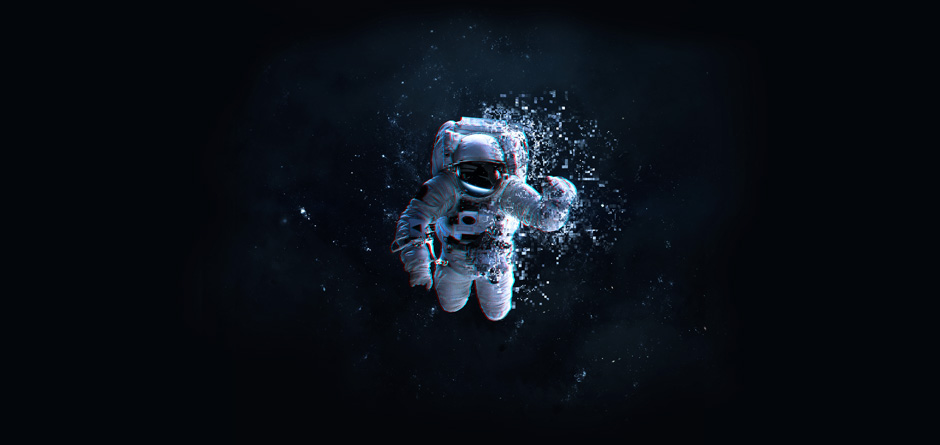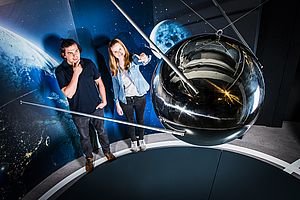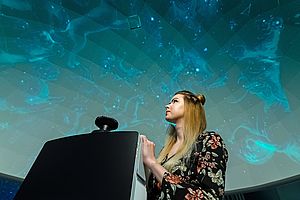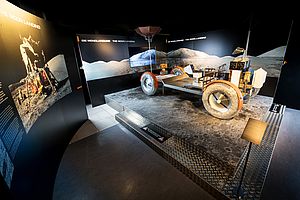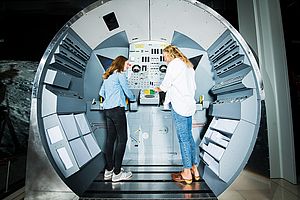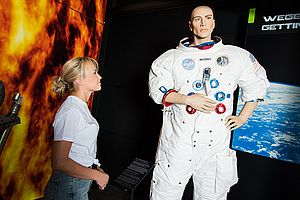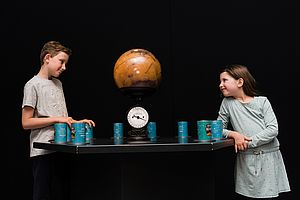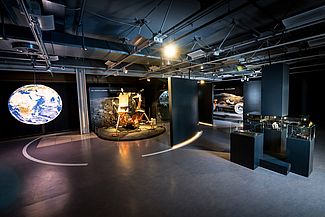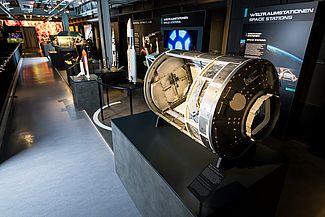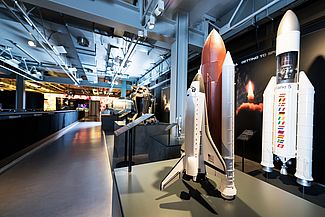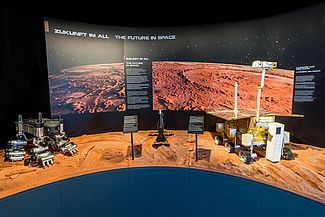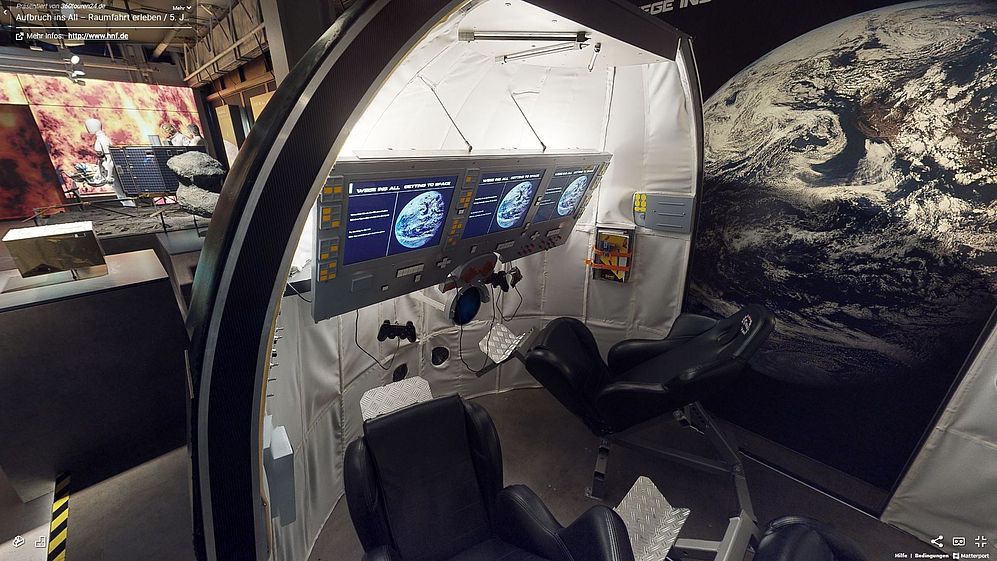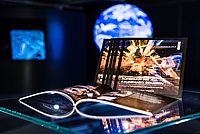Hello universe! The experience of space travel
5 april 2019 to 1 november 2020
Fifty years after Neil Armstrong and Buzz Aldrin stepped onto the moon, this major exhibition will take visitors on their very own journey into space.An impressive display of darkness, planets and space vehicles will welcome visitors to the 800-square-metre exhibition, which offers extensive insights into mankind’s conquest of space.
Moon meteorites greet visitors
The tour starts out with an extraordinary exhibit: visitors are invited to admire a small piece of moon stone displayed in a cabinet.In addition, a starry sky is projected onto a cupola, representing the relationship between humans and the universe. A replica of the Nebra sky disk, an astrolabe and a telescope all serve to demonstrate how mankind has tried to understand the stars.
The early days of rocket science in Peenemünde, Germany, are linked to war and death, as illustrated by the destroyed combustion chamber of a V2 rocket, but visitors can also see the V2’s “Mixer”, the first board computer.
Sputnik shock and Apollo triumph
The Apollo programme is one of the exhibition’s focal points. Visitors have the spectacular opportunity of driving over the moon’s surface with the moon rover or standing in the cockpit of the lunar module of Apollo 11, just as Armstrong and Aldrin once did. There is a miniature model of the entire lunar module in addition to an original computer and two control panels from Saturn rockets.Thanks to Deep Frame, an astronaut floating in the atmosphere and a flight through the planetary system can be experienced three-dimensionally – a special attraction that doesn’t even require 3D glasses.
Space station, rockets and astronaut clothing
Numerous space stations, probes and rockets are featured as models, ranging from the Saturn V to the space shuttle through to the ISS, Alexander Gerst’s temporary home. The combustion chamber of an Ariane 5, the first probe to land on a comet, and astronauts’ space suits are also on display. Furthermore, augmented reality allows visitors to explore the individual layers of a suit.The satellite navigation area offers a precise depiction and vivid explanation of how these technologies are routinely used.
Future and playground
What will a trip to Mars or habitation on the moon look like for humans? A rover, probe and walking robot tasked with surveying the surface of Mars all highlight the scientific exploration of the red planet.The exhibition concludes with the Lunar Lander Land, where children can steer a lunar rover or make a footprint in moon dust. Moreover, tin cans are used to demonstrate the gravitational pull of the planets in our solar system.
Fire extinguisher and lunar map in the foyer
Visitors to the museum can get a first or further impression of the conquest of space in the foyer of the HNF, where they will find a model of Ariane 6, which is scheduled to launch in july 2020. In addition, you can see an original fire extinguisher from the Apollo mission as well as a cosmonaut glove. There are also other exhibits that were actually in space – the board clock from the Soyuz 18 space ship in 1975 and a lunar map used by Apollo 12 crew members in November 1969 and signed by the astronaut Dick Gordon.Virtual tour of the exhibition
During a 360-degree tour, get a sneak preview of our exhibition "Hello universe - the experience of space travel" before you visit and explore it. Get a feel for the permanent exhibition during a virtual tour.
